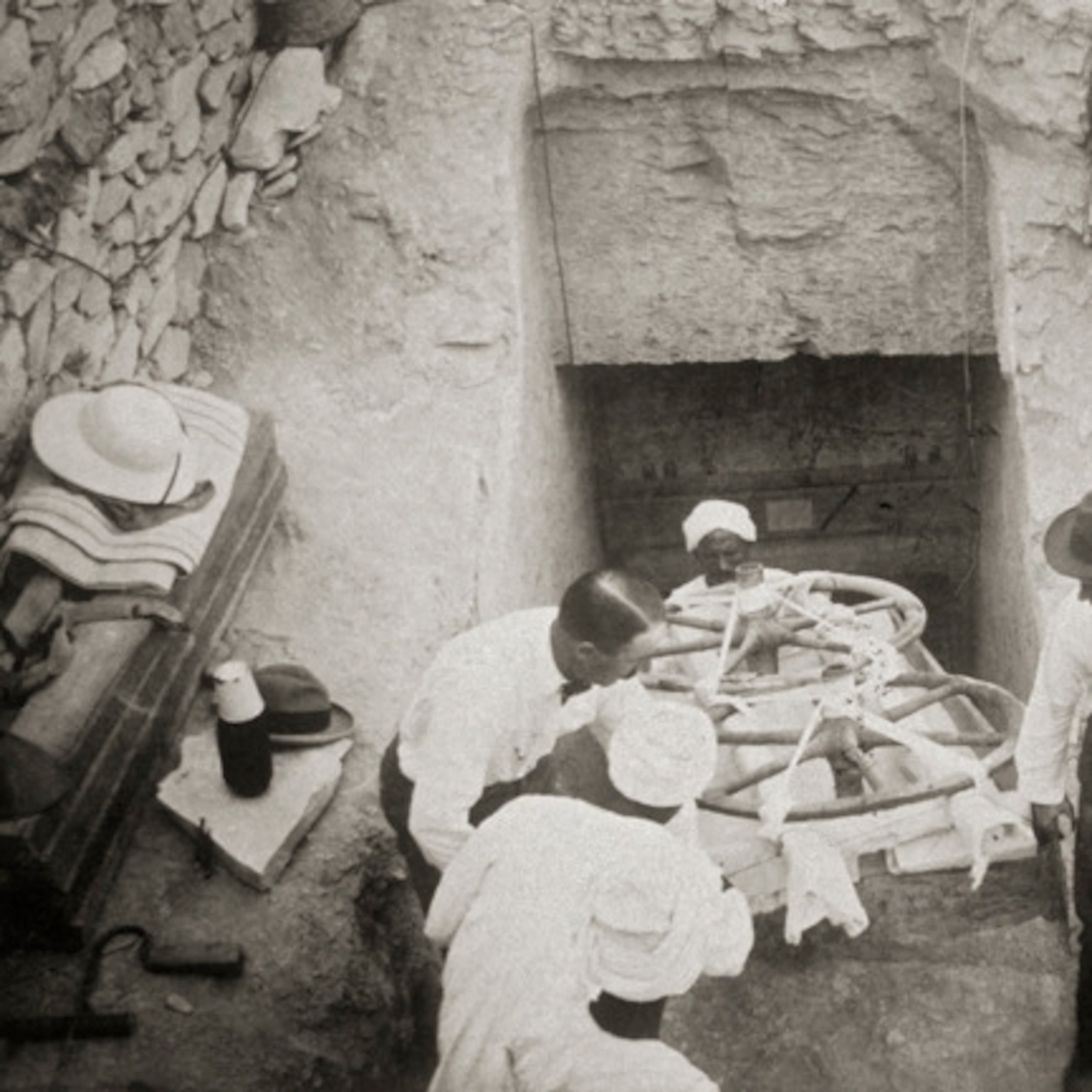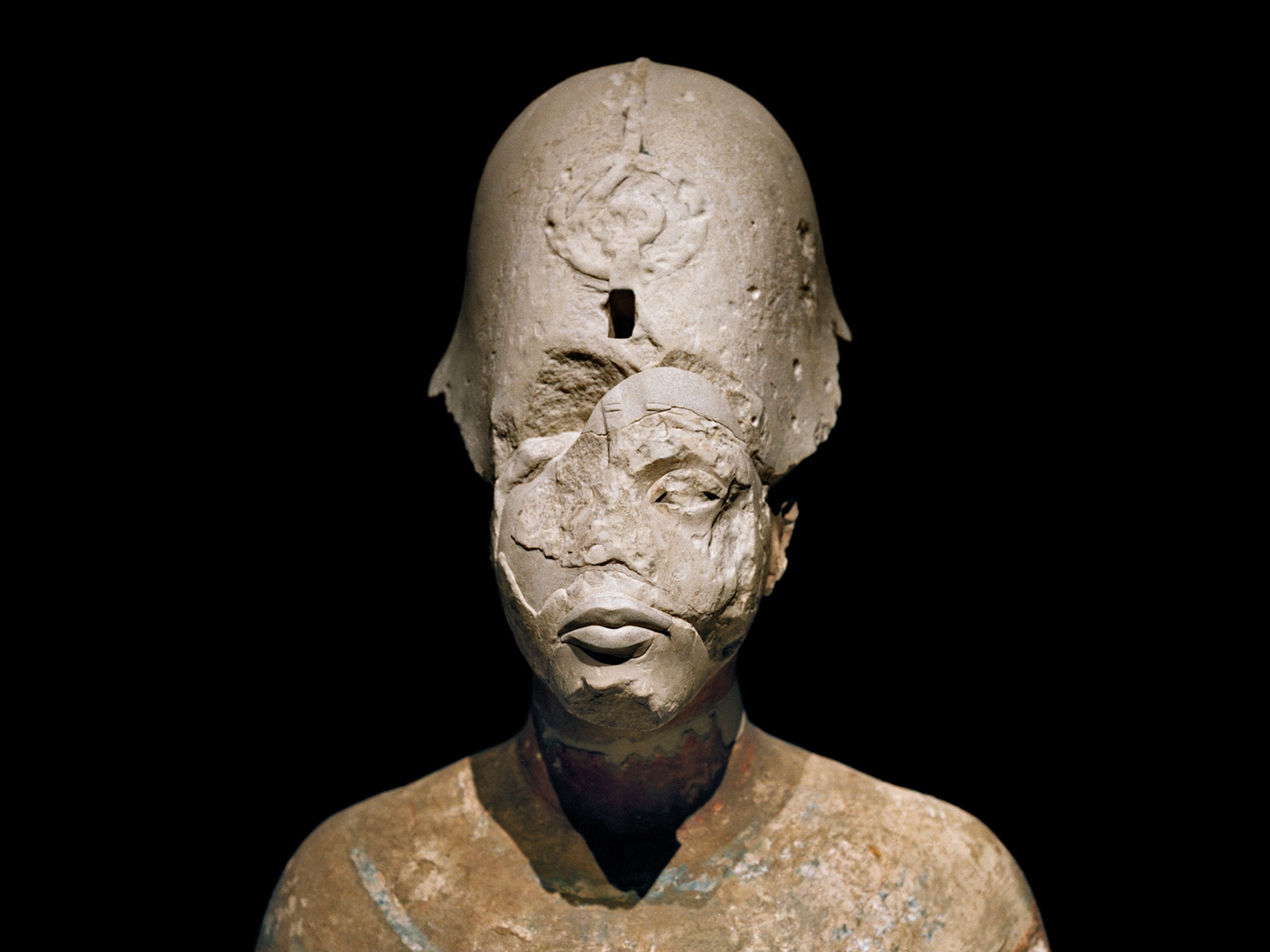
King Tut's grandparents were Egypt's royal power couple
For nearly four decades, Amenhotep III and his great royal wife, Tiye, ruled together over a time of peace and prosperity in ancient Egypt.
The long reign of Amenhotep III and his great royal wife, Tiye, was a golden age for Egypt. Ruling together for as many as 38 years, the pair oversaw a vast and prosperous empire from circa 1391 to 1353 B.C. during Egypt’s 18th dynasty. Wealth poured in from Nubia and the Levant, financing a new era of monument building and artistic expression.
Amenhotep III’s reign is one of the best documented in ancient Egypt. His father, Thutmose IV, passed onto him a wealthy and expansive kingdom at the height of its power and influence. Amenhotep’s empire would stretch 1,200 miles from the Euphrates in current-day Syria to the Fourth Cataract of the Nile in present-day Sudan. Early in his reign, Amenhotep waged successful military campaigns against Nubia, a land rich in gold; after claiming this new territory for Egypt, his reign was largely peaceful, allowing Egypt to grow rich and comfortable.

This placid reign would become a gift for today’s archaeologists and historians because of the wealth of documents and records it left behind. The king’s early years were documented through a series of soapstone scarabs that proclaimed Amenhotep’s successes and milestones. During their reign, Amenhotep III and Tiye built as many as 250 massive structures: palaces, mortuary complexes, temples, and monuments, all decorated with timeless works of art that told the story of the king’s reign. The king’s three jubilee celebrations were documented in excruciating detail.
The royal pair also kept careful records of their interactions with foreign powers. Scholars look to the Armana Letters, a rich trove of correspondence detailing the negotiations and affairs between Egypt and its allies. With these detailed accounts, a picture of this time and place exists more clearly than of almost any other in ancient Egypt, and the lives of Tiye and Amenhotep can come into focus more than for any other pair of Egyptian royals. (Here's what the Armana Letters reveal about ancient pirates.)

Rise to the throne
Ruling for about nine years, Pharaoh Thutmose IV secured valuable alliances that made Egypt wealthy before he passed away. Scholars disagree on Amenhotep III’s exact age when he succeeded his father as pharaoh; many believe he was still a child, placing him sometime between seven and 12 years old. As the new pharaoh was so young, his mother, Thutmose IV’s second wife Queen Mutemwiya, acted as regent. Later in his reign, Amenhotep would have the story of his divine conception carved into the walls at the temple of Luxor: The god Amun-Re, in the form of Pharaoh Thutmose IV, visits a sleeping Queen Mutemwiya. When she wakes, Amun-Re announces: “Amenhotep, governor of Thebes, is the name of the child that I have placed in your body. He will exercise royalty well throughout the country.”

Archaeologists are fortunate to have many scarab amulets produced during Amenhotep’s reign to commemorate special events. Carved from soapstone, many of these bug-shaped objects feature inscriptions that proclaim Amenhotep III’s great deeds and also provide insight into the milestones of his reign. More than 200 have been found in sites from all over the Egyptian empire. One set of amulets describes a successful wild bull hunt:
In the second year of the reign of His Majesty, the Living Horus, the mighty Bull, diademed with Maat, the [e]stablisher of Laws, the Pacifier of the Two Lands, Mighty one in arm (or, thigh), smiter of the Nomads, the son of Ra, Amenhetep, Governor of Thebes, giver of life (the King’s Woman, the Great One, [being] Tiye, living one like Ra, a marvelous thing took place through His Majesty.
The vivid description of how the pharaoh and his army killed dozens of wild bulls sent not only a message of his prowess and strength, but also a subtle warning that the new king would put down any vassal state that tried to rebel.



Archaeologists have also used these scarabs to establish when Amenhotep and Tiye wed. Another series of amulets were created just to commemorate the event. Fifty-six have been recovered, and each one proclaims the royal match with joy and reverence. They name her father, Yuya, and mother, Tuya. (See pictures of their 3,400-years-old mummies.)
While scholars continue to debate the exact roles and origins of Tiye’s parents, there is agreement that they were a noble family and that Tiye grew up at court. Betrothed to the king at a young age, Tiye had been well educated to prepare for life as a queen. She appears to have been a cultured person and owned her own library.
Amenhotep and Tiye’s lifelong partnership produced at least six children: four daughters, Sitamun, Henuttaneb, Isis, and Nebetah; and two sons, Thutmose and Amenhotep. The marriage scarabs do not assign an exact year to the wedding, but the bull scarabs show that the couple were wed by Amenhotep’s second year on the throne. They also show that shortly after the marriage, Tiye was named Great Royal Wife.
Parents of the queen

KV46, the resting place of Queen Tiye’s parents, was the best preserved tomb found prior to the discovery of the tomb of King Tutankhamun. Found by James Quibell in 1905, Tuya and Yuya’s tomb had been looted as many as three times in the distant past. Grave robbers stole portable objects, such as oils and jewelry, but left behind larger items: gilded furniture, golden coffins, and the mummies inside.
Tuya and Yuya were probably in their 50s or 60s when they died and were buried in the Valley of the Kings. Scholars first used inscriptions on their funereal goods to identify them. Hieroglyphs spell out their names and trumpet their titles. Yuya’s titles included Divine Father, Priest of Min, Commander of Chariots, and Chief of Horses. Tuya also held important positions, including Supervisor of the Harems of Amun in Thebes and of Min in Akhmim.
Recent DNA analysis confirmed the identities and lineages of both Yuya and Tuya. A study in the Journal of the American Medical Association confirmed that they were great-grandparents to King Tut.
The royal wives club
Egyptian pharaohs could take many wives, and their great royal wife was chief among them. Amenhotep did build a harem, but his relationship with Tiye was different from the start. Historians have found that she wielded great influence at court, unusual for a woman at that time. Her name appeared on official acts, including the announcement of Amenhotep’s marriage to a foreign princess. (These ancient artifacts honor Egypt's powerful queens.)
By the 10th year of his reign, Amenhotep had repeatedly requested a daughter from the king of Mitanni, in northern Mesopotamia, and finally a princess was sent to Egypt loaded with gifts and a large entourage in train. To commemorate her arrival, another series of scarabs were issued, one of which read:
The Great Queen Tiye . . . marvels that were brought to his majesty the daughter of Suttarna, ruler of Naharin [Mitanni]. Giluk(h)epa and the chief ladies of her harem: 317 women.
The royal female line

The daughters of Amenhotep and Tiye played an important role during the pharaoh’s jubilee celebrations. The first was held around year 30 of his reign; his eldest daughter, Sitamun, married Amenhotep to become a daughter-wife and queen; her younger sister Isis seems to have done the same in the second jubilee around year 34.
Many Egyptologists think that these unions were purely symbolic, with no sexual relationship between parent and child. Almost all the evidence of these unions is related to the jubilees. It seems these marriages were part of the festival’s complicated regenerative rituals.
The two daughters disappear from the historical record after their father’s death, but their mother does not. Tiye took on the role of royal mother when her son Amenhotep IV became Pharaoh. She remains in his court after he changes his name to Akhenaten and revolutionizes Egyptian religion. Several murals from the Amarna tomb of her steward Huya depict Tiye enjoying a banquet with her granddaughters.
Queen Tiye announced the king’s new wife, Gilukhepa. Although the pharaoh would go on to wed a princess from Arzawa, two from Babylon, and two more from Mitanni, they never achieved the status or power of Tiye. Often the names of these foreign princesses have been lost from the record, while the presence of Tiye the great royal wife is reiterated in the sources, leaving no doubt as to which woman held power over Egypt. A year after Gilukhepa’s arrival, another scarab announced the important gift that the pharaoh had offered to his great royal wife, Tiye: a man-made lake built near her hometown:
Amenhotep Ruler of Thebes given life, the great royal wife Tiye, may she live, whose father’s name is Yuya and whose mother’s name is Tuya. His majesty commanded the making of a basin for the great royal wife Tiye, may she live, in her town of Djarukha.
Power sharing
Studying artworks created during Amenhotep’s reign shows how Tiye’s influence grew over the years. Early depictions show her as diminutive; in later portrayals, Tiye is taller and her attire more ornate. In statuary of the royal couple, she and Amenhotep are the same height, symbolizing a relationship of equals. (Meet the three queens who led Egypt against Hyksos invaders—and won.)
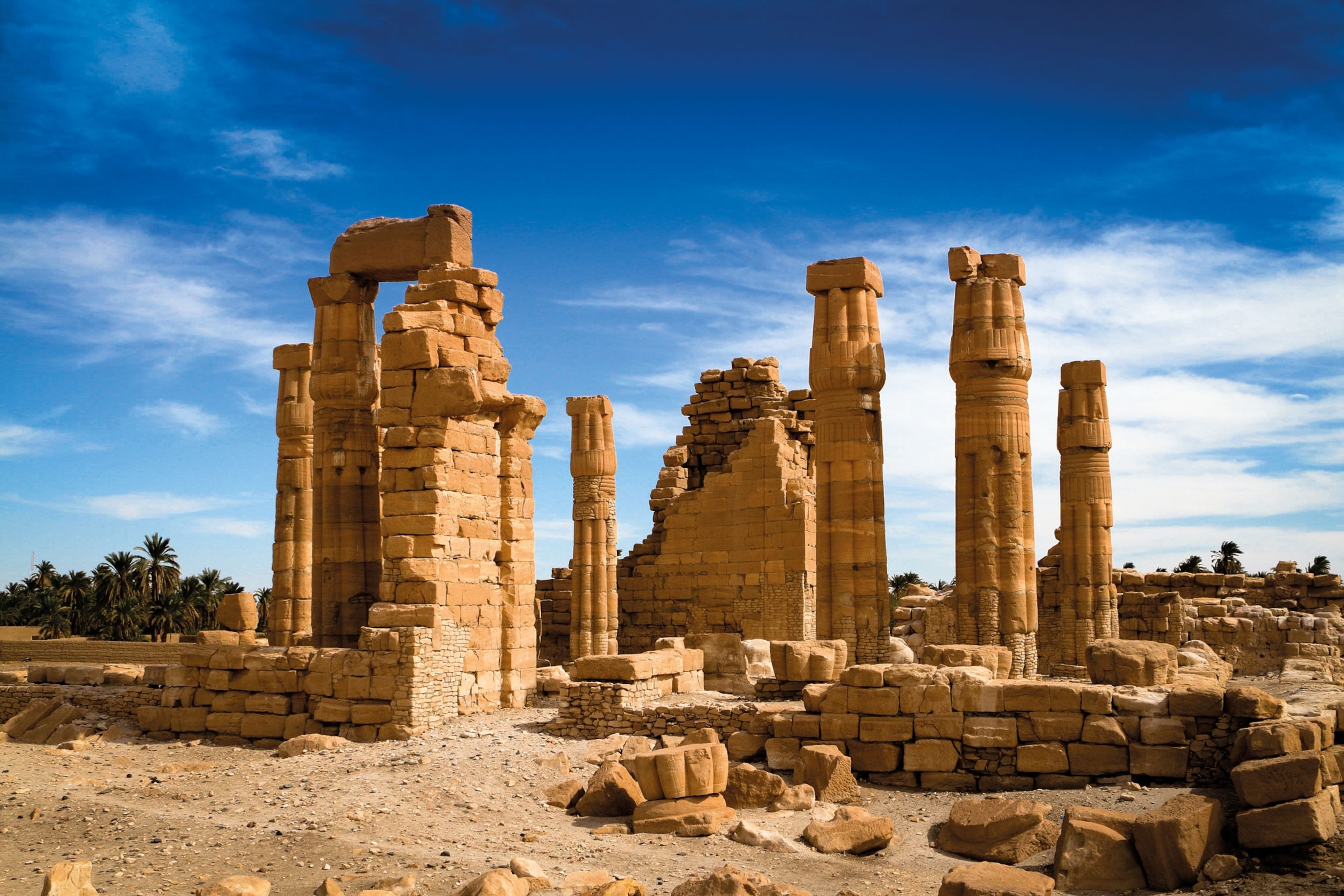
The pharaoh included his wife in government affairs, both domestic and international. Several seals, which were used to seal papyri, have been found bearing her royal cartouche. Historians studying the Amarna Letters, a collection of correspondence between Egyptian leaders and allies, have found foreign leaders mentioning Queen Tiye by name and recognizing her skill and intellect. The queen’s writing demonstrates that she may have studied foreign languages; her correspondence with King Tushratta of Mitanni seems to indicate that she knew Akkadian.
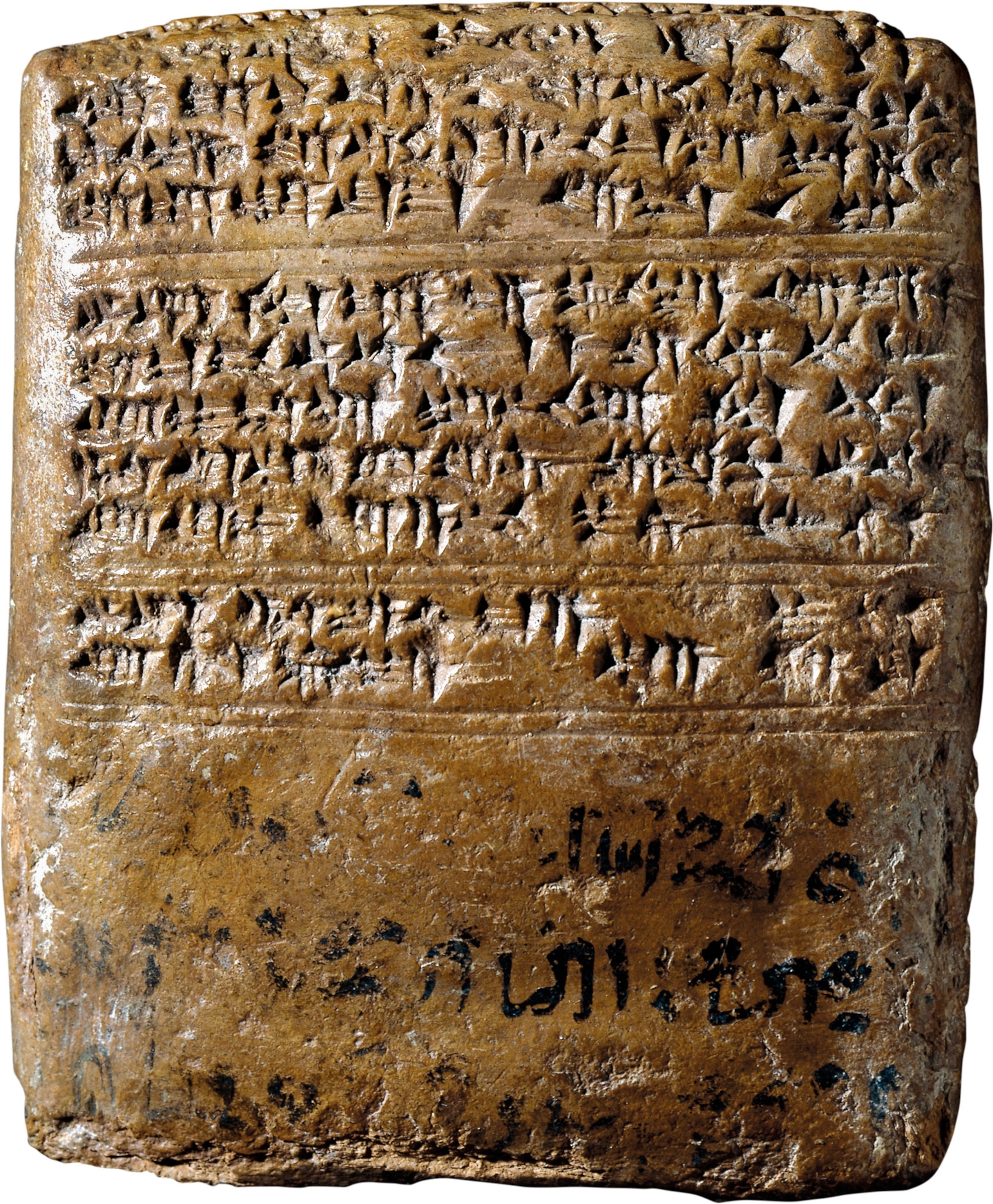
Over the course of his 38-year reign, Amenhotep celebrated three jubilees and made Tiye a participant in these rituals, which scholars believe represented the unification of Egypt and served to empower the rulers. Tiye was the first queen to participate in these celebrations. From year 30 of Amenhotep’s reign, the sculptures made of them together depict both as remarkably youthful, reflecting the miraculous rejuvenation thought to proceed from the jubilee. (See also: The truth behind Egypt's female pharaohs and their power.)
Amenhotep and his queen’s successful partnership provided a foundation upon which the pharaoh commissioned great monuments, temples, public parks, and palaces. Perhaps most magnificent was his funerary temple, built on the west bank of the Nile near Thebes (modern-day Luxor). Bigger than any other pharaoh’s complex, little remains of the massive structure, which was damaged by an earthquake about a century after his death. Future pharaohs would rob the site of its statues and stones to build their own monuments, and floods from the Nile would further damage it. Two huge statues of Amenhotep III still sit at the site’s old entrance, as archaeologists have begun new excavations to reveal the temple’s previous splendor.

Death of the king and queen
Amenhotep III died in 1353 B.C. and his tomb (now identified as WV22) is located in the Valley of the Kings. After his death, Tiye received letters from foreign rulers, such as Tushratta of Mitanni, expressing their condolences and securing their ties with the new monarch, Amenhotep IV, son of the late pharaoh and Tiye, who later changed his name to Akhenaten when he imposed religious reforms across Egypt. (Here's how he changed the face of Egypt.)
Tiye outlived her husband, but scholars don’t know by how many years. Her tomb has not been identified, although her mummy and that of her husband have. Amenhotep’s tomb was looted not long after his death, but priests relocated his mummy in antiquity to protect it from robbers. In 1898 scholars found the pharaoh’s mummy hidden in KV35, the tomb of his grandfather Amenhotep II. Other royal mummies were hidden there, too, including an unidentified woman with flowing hair. Known until recently as the Elder Lady, the mummy has been confirmed through DNA analysis to be Queen Tiye, reunited in death with her husband.
Pharaoh's temple for the sun
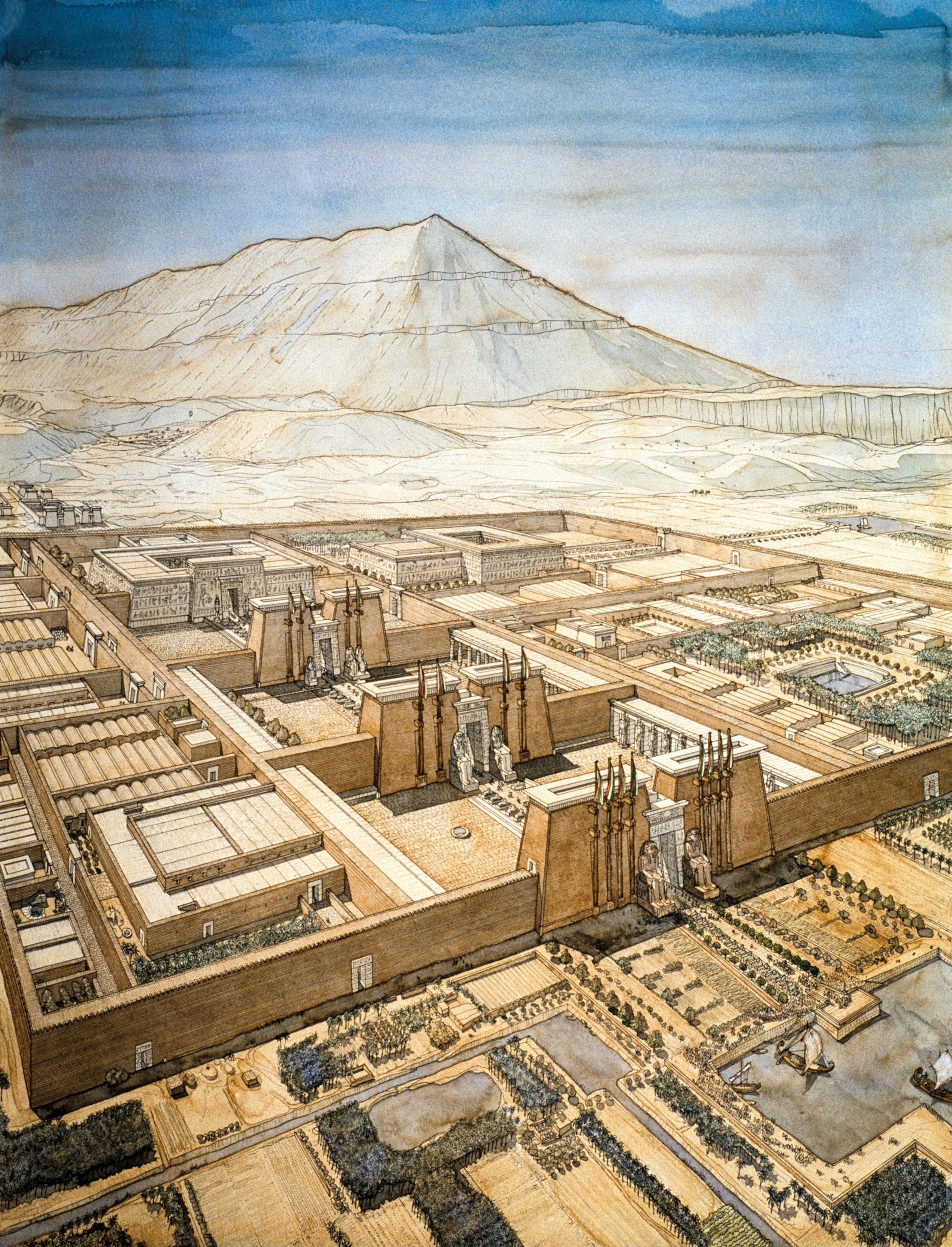
Today little is visible of the funerary temple built by Amenhotep III on the west bank of the Nile. Inscriptions say it was designed by the architect Amenhotep, son of Hapu, and constructed as a monument for the god Amun. To greet the sun god, the temple entrance faced east and was flanked by two colossal statues of Amenhotep III. Carved from single blocks of quartzite sandstone, these two giants are the most visible remnants of the complex’s vast size and grandeur.
Archaeologists began new excavations at the site in 1998, led by Armenian Egyptologist Hourig Sourouzian. Her work has shown the rich detail still buried in the ground, including 72 statues of the lion-headed goddess Sekhmet and two more colossal statues of Amenhotep III.
More detailed reconstructions can now show the grand scale of Amenhotep III’s original vision. A series of massive pylons and statues guided visitors through several courtyards to the so-called Sun Court and the sanctuary of Amun.

